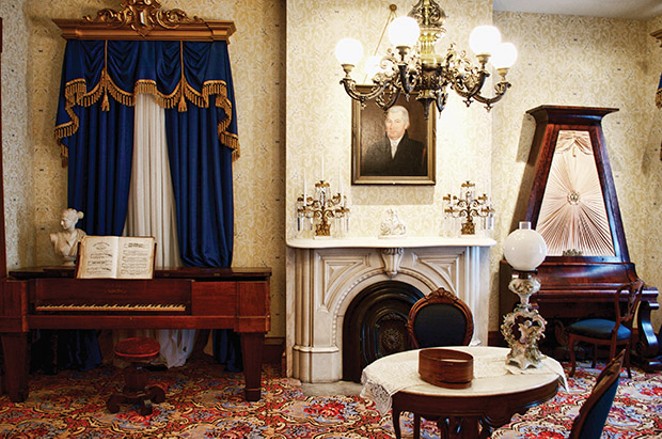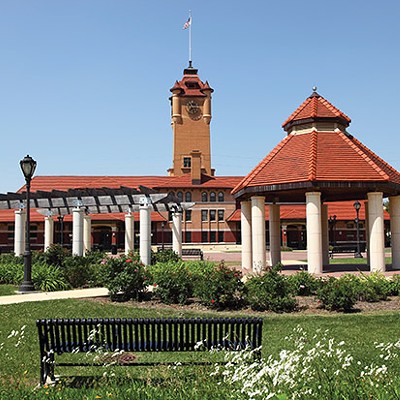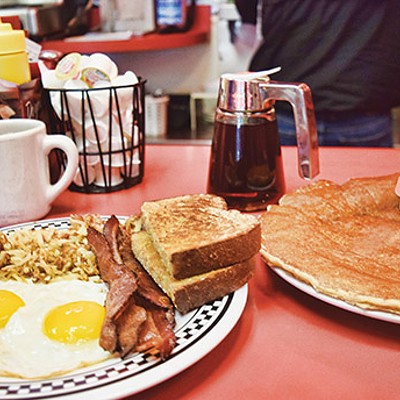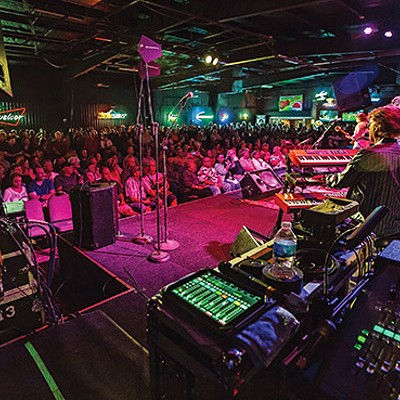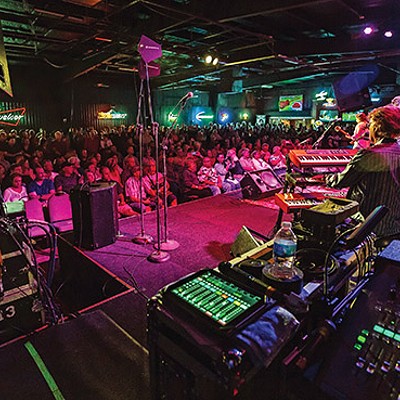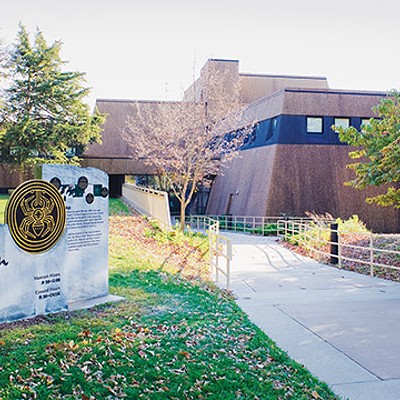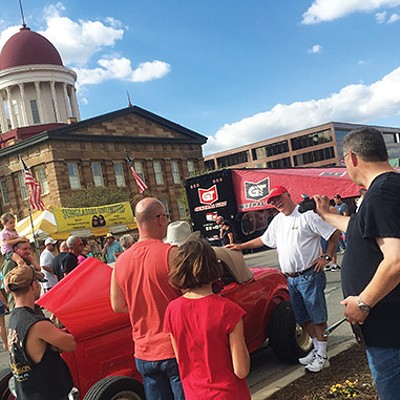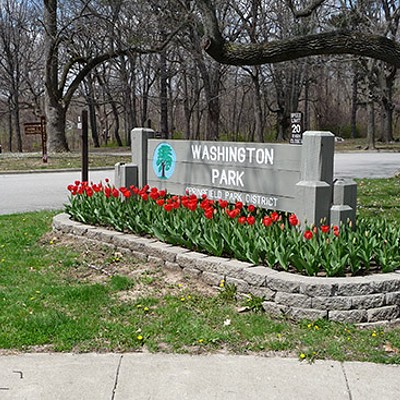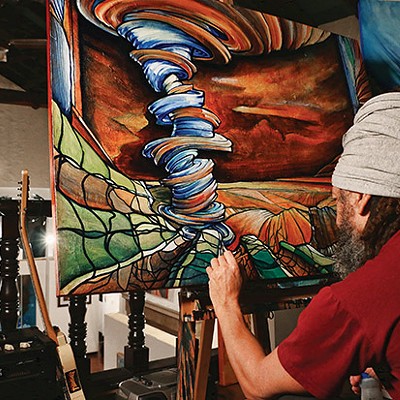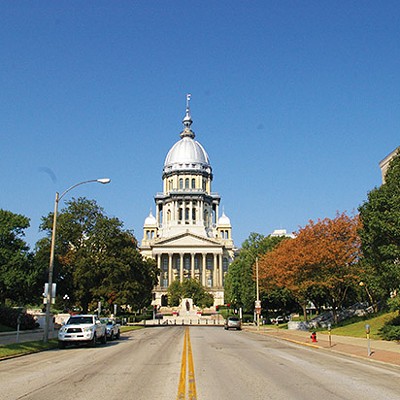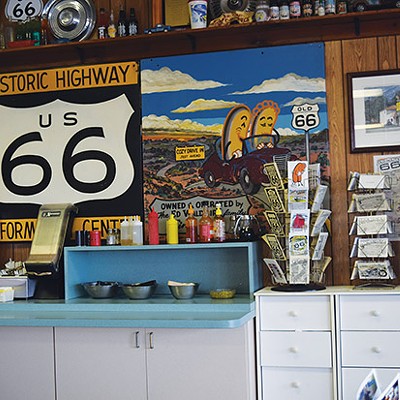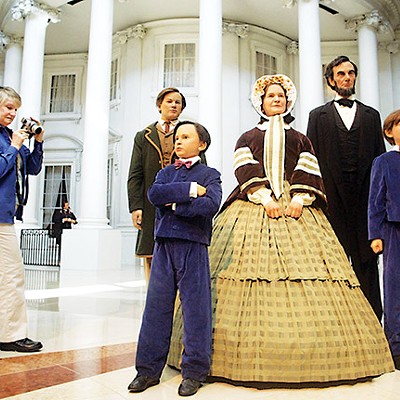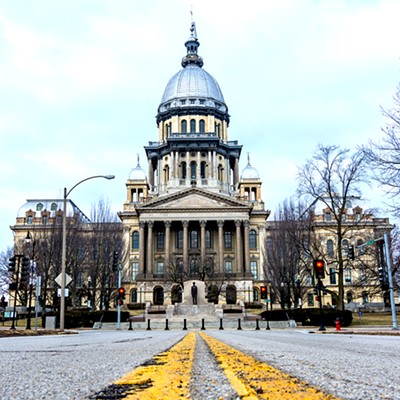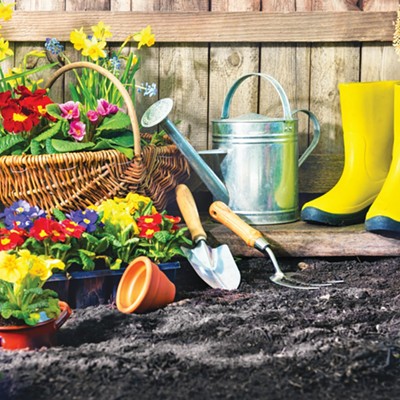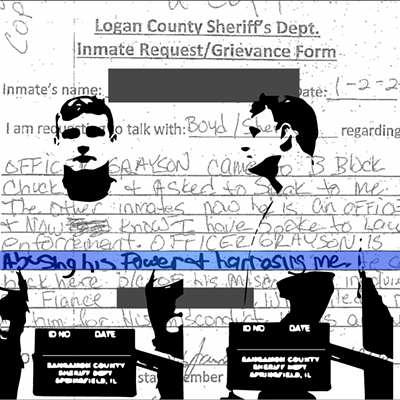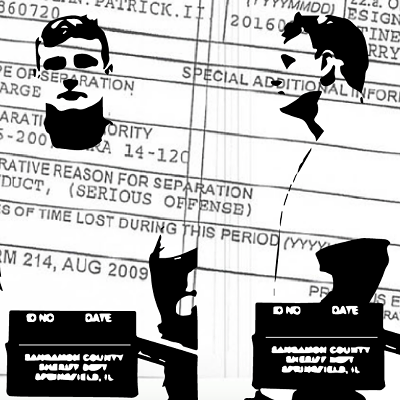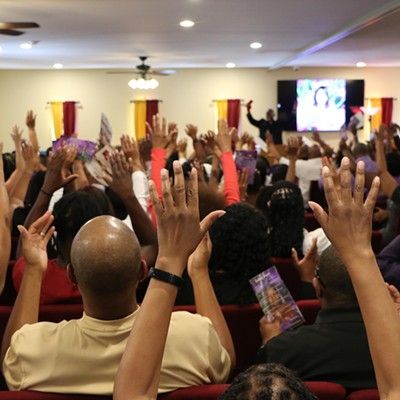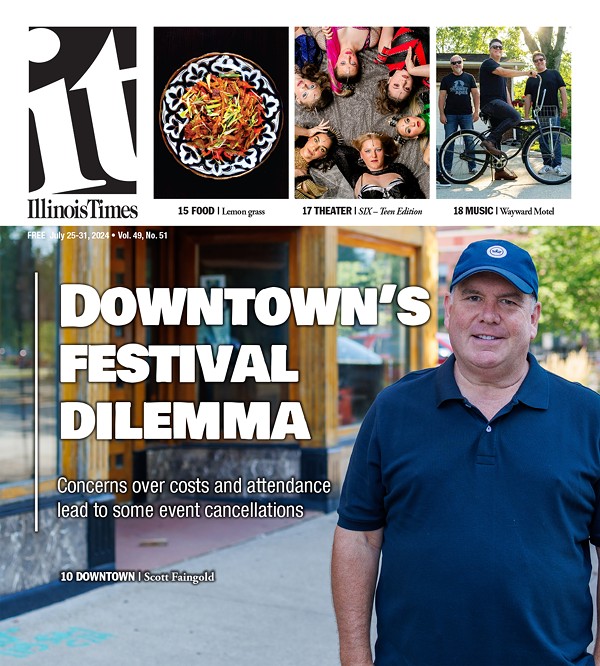Stepping through the front door of Edwards Place is like stepping back in time. Recently restored to the grandeur of its 1850s appearance, this gracious Italianate mansion evokes an era when hoop skirts were heard rustling in the parlor and Abraham Lincoln’s laugh rang out from the dining room.
Built in 1833, Edwards Place is the oldest surviving house in Springfield. It is furnished and interpreted to the 1850s, when the house was occupied by Benjamin and Helen Edwards and their three young daughters. The Edwardses were a prominent family in antebellum Illinois. Benjamin’s father, Ninian, was territorial governor, senator and governor of Illinois. His older brother, Albert Gallatin, was a St. Louis merchant and founder of the brokerage firm A. G. Edwards. And his oldest brother, Ninian W., was a state politician married to Elizabeth Todd, Mary Lincoln’s oldest sister. This made the Edwards family relatives of Abraham Lincoln through marriage.
There is a common misperception that Abraham and Mary Todd were married at Edwards Place, but this is not the case. In fact, the Lincolns were married at the home of Ninian and Elizabeth Edwards, with whom Mary lived as a young woman. Their house stood on South Second Street before being razed in 1917 to make way for part of the Capitol complex. Lincoln was, however, a frequent visitor to Edwards Place. He and Mary Lincoln were often guests at the Edwards’ famed receptions that would take place every winter during the legislative session. Moreover, Edwards Place is home to two pieces of antique furniture with significant ties to the Lincolns that no visitor to Springfield looking for Lincoln should leave without seeing.
The first is a seven-foot-long, horsehair-upholstered, mahogany sofa, affectionately dubbed the “courting couch.” This sofa belonged to Ninian and Elizabeth Edwards. It sat in their parlor in the days when Mary was courted by an awkward young lawyer named Abraham Lincoln. Elizabeth later recalled seeing the young lovers sitting on the sofa: “Lincoln would listen & gaze on her as if drawn by some Superior power, irresistably So.” That sofa was present in the room the night the Lincolns were married, a silent witness to one of the most pivotal moments in the future president’s life. Today visitors can see the “courting couch,” upholstered in the horsehair fabric upon which Lincoln and Mary sat, in the front parlor of Edwards Place under original oil portraits of Ninian and Elizabeth Edwards.
Edwards Place also boasts the 1830s square grand piano which belonged to Ninian and Elizabeth Edwards. It was an instrument that Lincoln would have heard played on many occasions: lively reels during large legislative parties he attended as a shy young man; sentimental ballads during intimate gatherings he attended as Mary’s suitor; and, as legend has it, a wedding march on the night he married Mary. Like the “courting couch,” this instrument recently underwent a full-scale restoration, and now Edwards Place periodically hosts concerts featuring music played on this piano that Lincoln once heard. (A CD recording of one of these concerts is available for purchase at Edwards Place.)
In fact, everything in Edwards Place has a story to tell, from the Edwards’ prized celery vase (because celery was a status symbol in the 19th century) to a large, haunting portrait of a girl who died too soon; from Helen Edwards’ original music books bearing inscriptions from old suitors to fragments of her daughters’ tea set recovered from an archaeological dig. These stories are brought to life during a guided, 45-minute tour that invites visitors to step not just into this historic house, but into the mindset of those who lived in Lincoln’s Springfield.
Even the house itself has secrets to share. During its first-floor restoration, wallpaper was removed, carpets were taken up, paint was scraped, and sheetrock was taken down, revealing intriguing remnants of the past long since forgotten. Today, these remnants are cleverly preserved and displayed: a patch of trim with its original, faux-oak graining; a segment of 1850s wallpaper preserved in its original location; a section of 1830s, hand-split lath left exposed – all are windows into the past for modern visitors to peer through.
Visitors to Edwards Place are invited to fully immerse themselves in the historic space. Here you will find no velvet ropes or designated pathways; rather, you are invited in without boundaries to fully experience its hospitality, just the way Lincoln did when he was a regular guest in this home. In fact, visitors are permitted to sit on all but the black-upholstered furniture (which was original to the Edwards family) to more fully experience the sensation of life in the 1850s. The site also offers regular special events designed to bring the past to life, such as tea parties, piano concerts, plays and even murder mysteries. Visitors are encouraged to visit www.edwardsplace.org to check the schedule of events.
Tours of Edwards Place are offered Tuesdays-Fridays at 1, 2 and 3 p.m., and Saturdays at 12, 1, and 2 p.m. The mansion is closed in January and February.
Historic Edwards Place
Visit the oldest house in Springfield
[
{
"name": "Air - MedRect Combo - Inline Content 1",
"component": "11490391",
"insertPoint": "3",
"requiredCountToDisplay": "1",
"parentWrapperClass": "fdn-ads-inline-content-block"
},{
"name": "Air - MedRect Combo - Inline Content 2",
"component": "11490392",
"insertPoint": "7",
"requiredCountToDisplay": "5",
"parentWrapperClass": "fdn-ads-inline-content-block"
},{
"name": "Air - MedRect Combo - Inline Content 3",
"component": "11490393",
"insertPoint": "12",
"requiredCountToDisplay": "9",
"parentWrapperClass": "fdn-ads-inline-content-block"
}
]
Illinois Times has provided readers with independent journalism for almost 50 years, from news and politics to arts and culture.
Your support will help cover the costs of editorial content published each week. Without local news organizations, we would be less informed about the issues that affect our community..
Got something to say?
Send a letter to the editor and we'll publish your feedback in print!

